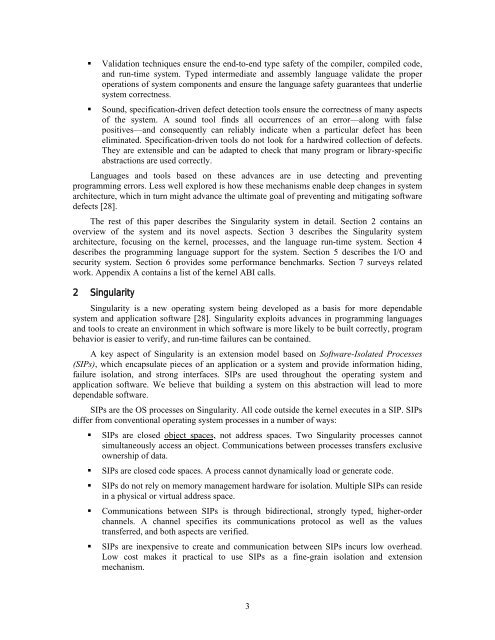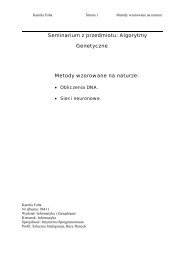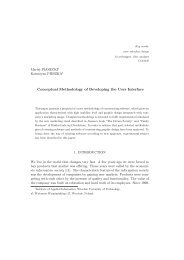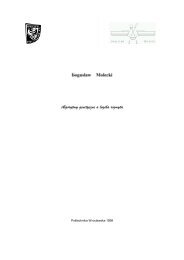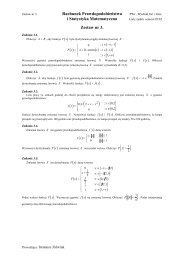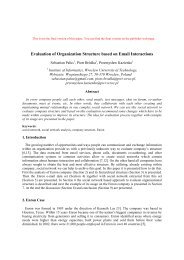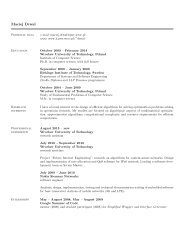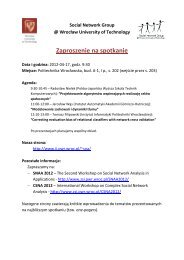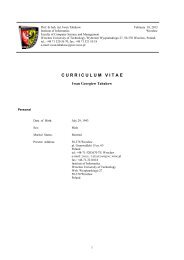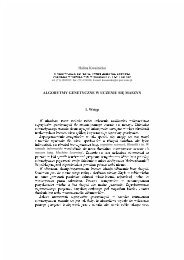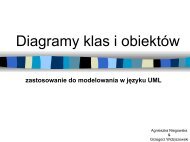1 IntroductionSoftware runs on a platform that has evolved over the past 40 years and is increasinglyshowing its age. This platform is the vast collection of code—operating systems, programminglanguages, compilers, libraries, run-time systems, middleware, etc.—and hardware that enables aprogram to execute. On one hand, this platform is an enormous success in both financial andpractical terms. The platform forms the foundation of the $179 billion dollar packaged softwareindustry [3] and has enabled revolutionary innovations such as the Internet. On the other hand,the platform and software running on it are less robust, reliable, and secure than most users (anddevelopers!) would wish.Part of the problem is that our current platform has not evolved far beyond the computerarchitectures, operating systems, and programming languages of the 1960’s and 1970’s. Thecomputing environment of that period was very different from today’s milieu. Computers wereextremely limited in speed and memory capacity; used only by a small group of technicallyliterate and non-malicious users; and were rarely networked or connected to physical devices.None of these characteristics remains true, but modern computer architectures, operating systems,and programming languages have not evolved to accommodate a fundamental shift in computersand their use.Singularity is a research project in <strong>Microsoft</strong> <strong>Research</strong> that started with the question: whatwould a software platform look like if it was designed from scratch with the primary goal ofdependability, instead of the more common goal of performance? 3 Singularity is working toanswer this question by building on advances in programming languages and programming toolsto develop and build a new system architecture and operating system (named Singularity), withthe aim of producing a more robust and dependable software platform. Although dependability isdifficult to measure in a research prototype, Singularity shows the practicality of newtechnologies and architectural decisions, which should lead to more robust and dependablesystems in the future.With its exponential rate of progress, hardware evolution commonly appears to drivefundamental changes in systems and applications. Software, with its more glacial progress, rarelycreates opportunities for fundamental improvements. However, software does evolve, and itschange makes it possible—and necessary—to rethink old assumptions and practices. Advances inprogramming languages, run-time systems, and program analysis tools provide the buildingblocks to construct architectures and systems that are more dependable and robust than existingsystems:• Expressive, safe programming languages, such as Java and C#. Type safety ensures avalue or object is always correctly interpreted and manipulated. Memory safety ensures aprogram references memory only within the bounds of valid, live objects.• Optimizing compilers and high performance run-time systems generate safe code thatruns at speeds comparable to unsafe code [20]. These compilers, unlike the morecommon just-in-time (JIT) compilers, perform global optimizations that mitigate safetyrelatedoverhead. Garbage collectors in these systems reclaim memory with overheadcomparable to that of explicit deallocation.3 We use the term “dependability” rather than “reliability.” IFIP WG10.4 on Dependable Computing and Fault Tolerancedefines the terms as follows:“The notion of dependability, defined as the trustworthiness of a computing system which allows reliance to be justifiablyplaced on the service it delivers, enables these various concerns to be subsumed within a single conceptual framework. Dependabilitythus includes as special cases such attributes as reliability, availability, safety, security.” [29]2
• Validation techniques ensure the end-to-end type safety of the compiler, compiled code,and run-time system. Typed intermediate and assembly language validate the properoperations of system components and ensure the language safety guarantees that underliesystem correctness.• Sound, specification-driven defect detection tools ensure the correctness of many aspectsof the system. A sound tool finds all occurrences of an error—along with falsepositives—and consequently can reliably indicate when a particular defect has beeneliminated. Specification-driven tools do not look for a hardwired collection of defects.They are extensible and can be adapted to check that many program or library-specificabstractions are used correctly.Languages and tools based on these advances are in use detecting and preventingprogramming errors. Less well explored is how these mechanisms enable deep changes in systemarchitecture, which in turn might advance the ultimate goal of preventing and mitigating softwaredefects [28].The rest of this paper describes the Singularity system in detail. Section 2 contains anoverview of the system and its novel aspects. Section 3 describes the Singularity systemarchitecture, focusing on the kernel, processes, and the language run-time system. Section 4describes the programming language support for the system. Section 5 describes the I/O andsecurity system. Section 6 provides some performance benchmarks. Section 7 surveys relatedwork. Appendix A contains a list of the kernel ABI calls.2 SingularitySingularity is a new operating system being developed as a basis for more dependablesystem and application software [28]. Singularity exploits advances in programming languagesand tools to create an environment in which software is more likely to be built correctly, programbehavior is easier to verify, and run-time failures can be contained.A key aspect of Singularity is an extension model based on Software-Isolated Processes(SIPs), which encapsulate pieces of an application or a system and provide information hiding,failure isolation, and strong interfaces. SIPs are used throughout the operating system andapplication software. We believe that building a system on this abstraction will lead to moredependable software.SIPs are the OS processes on Singularity. All code outside the kernel executes in a SIP. SIPsdiffer from conventional operating system processes in a number of ways:• SIPs are closed object spaces, not address spaces. Two Singularity processes cannotsimultaneously access an object. Communications between processes transfers exclusiveownership of data.• SIPs are closed code spaces. A process cannot dynamically load or generate code.• SIPs do not rely on memory management hardware for isolation. Multiple SIPs can residein a physical or virtual address space.• Communications between SIPs is through bidirectional, strongly typed, higher-orderchannels. A channel specifies its communications protocol as well as the valuestransferred, and both aspects are verified.• SIPs are inexpensive to create and communication between SIPs incurs low overhead.Low cost makes it practical to use SIPs as a fine-grain isolation and extensionmechanism.3


